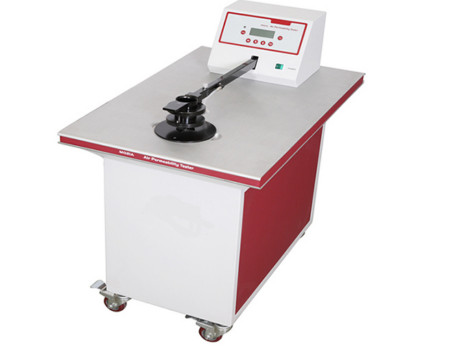- Qinsun Instruments Co., Ltd.
- Tell:+86-21-6780 0179
- Phone:+86-17740808215
- Address:No. 2578 Minhang District Gu Dai Road, Shanghai
- Contact:Mr. Li
- QQ:846490659
D737 Test Method for Air Permeability of Textile Fabrics

ASTM D737 is a standard method for testing the air permeability of fabrics. This standard applies to all types of fabrics, including yarns, blanks, knits, etc. It measures the air permeability of fabrics. These test methods can be used to determine properties such as airtightness and friction effect of fabrics, and to measure air permeability and compression thickness of fabrics. This standard can provide an important quality control method for the textile industry and provide assistance to end users.
Test Method:
The test uses a circular specimen area and is sprayed with a micro-fine powder via an aerosol duster. The test involves airflow from an airflow meter sensor and ancillary equipment on the other side of the test passing over the specimen area and generating a differential pressure on the capture device on the other side. The test procedure is instrumented to measure this differential pressure and calculate the air transmission rate of the specimen. Measuring the difference in airflow rates between the two sides can be used to determine the total airflow rate of the test process. In addition, the test can also monitor air permeability using total temperature differential colorimetry or other methods.

Fabric Air Permeability Test Apparatus:
To measure the air permeability of a fabric, the testing process uses equipment such as airflow tachometer sensors, differential pressure instruments, circular specimen areas, and aerosol dusters to prepare the specimens. Airflow tachometer sensors are used to measure the magnitude and direction of airflow velocity. Differential pressure instruments are used to monitor the differential pressure of the airflow during the test. Circular specimen areas provide a defined specimen size and area during testing while also reducing the risk to non-testers. Aerosol dusters can be used to prepare test specimens that have been standardized.
Caution:
Temperature and humidity should be kept relatively constant during testing and untested or controlled environments should be avoided during testing. Check that the dimensions of the specimens used are in accordance with the requirements, and that the placement of the specimen plate should not be affected by the compression effect caused by bending or folding. Any compression or rotation of the test will affect the results. Fabrics of different thicknesses and textures should be decompressed and compensated for according to the required inflation rate.
Conclusion:
ASTM D737 includes a series of measures that provide standardized test methods for air transmission rates of fabrics. These tests provide a support system for controlling the quality of textiles and can help textile manufacturers evaluate the quality of individual products and how these benefits are enjoyed in the final product. Standardized test methods ensure that the air permeability and related properties of fabrics are in accordance with best practice.





